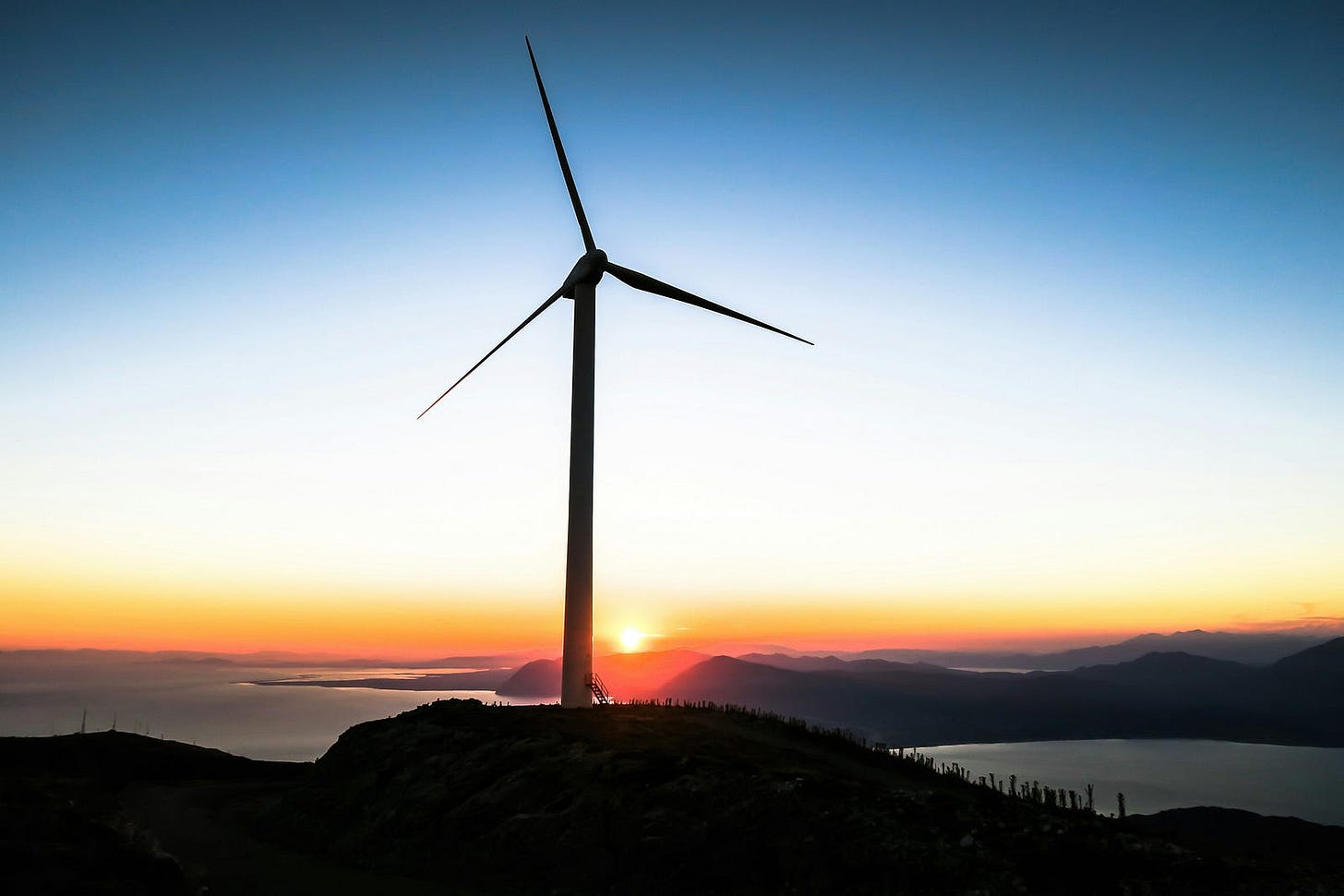The US Has Everything It Needs To Leap Towards Net-Zero
No, really, it does.

The US has famously resisted the push towards sustainability. Despite touting itself as a bastion of revolutionary technology, the nation has clung to archaic technologies like coal and gas power to keep the lights on. There are numerous reasons for this, such as upholding US global hegemony, the broken nature of US capitalism, and the politicisation of climate policy. But, as it stands today, nothing is standing in the way of the US reaching net-zero, and I can prove it to you.
Lazard recently revealed the current price per unit of energy for each energy source within the US, and it is a fascinating read. Onshore wind energy is actually free when subsidies are taken into account, but even without these subsidies, it’s still insanely cheap, costing from $27 per MWh. Likewise, utility-scale solar energy costs only $6 per MWh with subsidies, but even without subsidies, it only costs from $29 per MWh. These prices don’t include storage costs, which are needed to ensure these erratic renewables can always meet power demands. But even then, the prices are remarkably low, with onshore wind plus storage costing from $45 per MWh without subsidies and $8 per MWh with subsidies, and solar with storage costing from $60 per MWh without subsidies and $38 per MWh with. In comparison, Lazard found gas power costs from $45 per MWh and coal power costs from $69 per MWh.
Now, some of you might point out that renewables need energy storage to be useful, and so this data points to gas power being roughly the same price or cheaper than renewables when compared correctly. But, this idea that renewables need energy storage to be useful is wrong. Particularly for giant countries like the US.
A recent study has shown that the entire continental US can run on 100% wind and solar energy without the need for any grid-level storage. The idea is that if enough solar panels and wind turbines are spread around the country, at least one location will generate enough energy for the entire country, negating the need for expensive battery storage. You might think using such a vast volume of renewables would be too costly and inefficient with land usage, but you’d be wrong. Using real-life weather data, this study found that such an energy grid with enough renewables to have no blackouts would only take up 0.84% of US land, substantially less than the 1.3% that is currently taken up by the fossil fuel industry. This study also found that per capita energy expenses would be 63% cheaper than the US’s current energy grid! Moreover, new ultra-efficient power lines, like those used by Xlinks, make such an energy grid possible.
As such, if used in this way, renewables are at least 40% cheaper than the cheapest form of fossil fuel energy, even without renewable subsidies.
But even if you do use energy storage, renewables will soon be significantly cheaper. A study a few years ago found that for a 100% renewable energy grid to cost as much per unit of energy as our current fossil fuel-heavy one does, batteries will have to cost at most $20 per kWh, or about 6 times cheaper than they were at the time. Since then, the cost of building renewables has significantly dropped, but battery technology has only dropped marginally, hence Lazard’s findings, as the vast majority of energy storage systems use these older, more expensive batteries.
However, there is battery technology out there right now that reaches this $20 per kWh threshold, like Form Energy’s iron-air batteries. As such, as these batteries are adopted, the price of stored renewable energy will drop dramatically. However, as renewables themselves are now much cheaper than they were back when that $20 threshold was calculated, a 100% renewable energy grid using these batteries will actually have cheaper energy than a fossil fuel one.
So, in only a few years, stored renewable energy will likely be way cheaper than even the cheapest fossil-fuel energy.
You might expect that this is only possible if renewables are far less profitable than fossil fuel energy, but that is false. Back in 2020, Renewables gave investors yields of 200%, while fossil fuel plants only offered yields of 97%, and this far higher profitability has remained.
To summarise, not only is renewable energy significantly cheaper than fossil fuel energy in the US without the need for any subsidies, but the technology for the US to use 100% renewable energy while still being cheaper than fossil fuel power currently exists. Not only that, but this technology already exists on a commercial scale. To top that off, renewable energy is wildly more profitable than fossil fuel energy.
So, why isn’t the US adopting renewable energy as fast as humanly possible? Why is it holding on to old, planet-wrecking, less profitable, more expensive energy technology?
If the US was the perfect free-market capitalistic world as many claim it is, then it should be doing this. It’s a better deal for customers and investors alike. This is one of the few places where Capitalism should resolve climate change. So, the fact that the US isn’t rapidly adopting renewables and sprinting towards net-zero shows the US isn’t a true capitalistic free-market. It has force, internal and external, stopping it from evolving for the better, and that fact alone might be just as worrying as climate change itself.
Thanks for reading! Content like this doesn’t happen without your support. So, if you want to see more like this, don’t forget to Subscribe and help get the word out by hitting the share button below.
Sources: Oil Price, Will Lockett, Planet Earth & Beyond, Forbes


Ok, how do we, humans living in the USA go from where we are to having everything my family needs to live on the 45 parallel? It gets cold in Alpena in the winter?